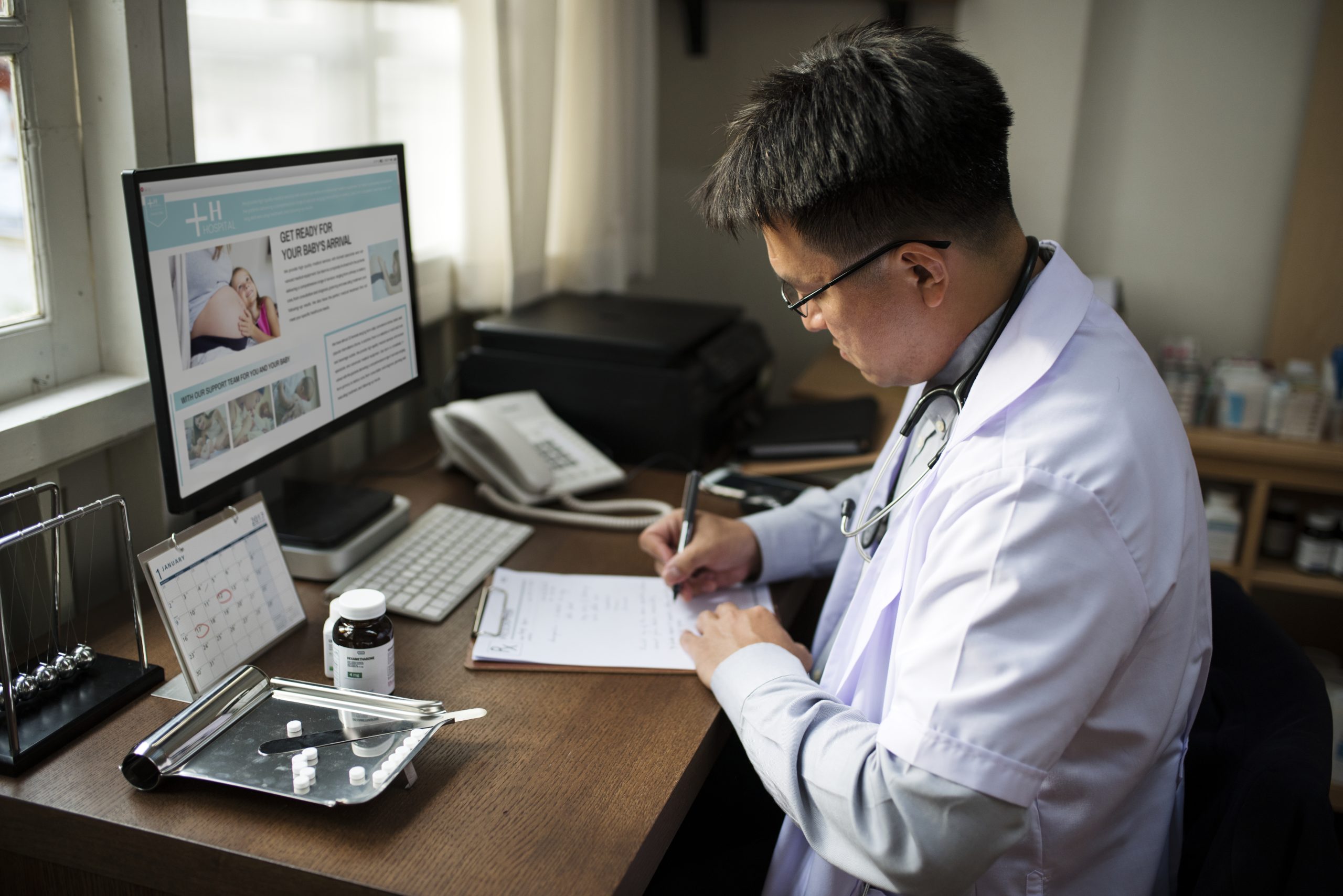Understanding the Continuum of Care
The road to mental health and addiction recovery isn’t always straight. People frequently switch between different levels of care based on their feelings, outcomes and support. Partial Hospitalization Programs (PHPs) and Intensive Outpatient Programs (IOPs) are two of the most common choices on this continuum. These programs are important parts of behavioral health and mental health care, providing comprehensive, evidence-based support for individuals in need.
This article is meant to help you understand this confusion. You’ll know what PHP and IOP are, how they are different, who they are best for, and how to choose which one is best for yourself or your loved one.
What is the PHP or IOP?
Partial Hospitalization Program (PHP):
A partial hospitalization program, or PHP program, is a structured treatment option that gives people daily support without the need to stay overnight. Participants spend the majority of their day in therapy, skill-building, and psychiatric care. PHP programs are designed to provide an intensive level of care for various mental health conditions, offering comprehensive support for individuals who need more than standard outpatient care but do not require 24/7 supervision. By the time they are done with their daily scheduled tasks, they can return to their home. This can be categorized as a level of outpatient care.
Intensive Outpatient Program (IOP):
An intensive outpatient program offers comprehensive therapy multiple days a week but for fewer hours. It gives you enough structure to make recovery your priority, but it still allows enough flexibility to go to work or school or take care of family responsibilities. Understanding the differences between IOP vs PHP is important, as each program varies in intensity, structure, and suitability for specific needs.
Both PHP and IOP are intended to bridge the gap between stability and independence, although they do so at different levels of intensity. IOPs may also include specialized treatments, such as anger management or mindfulness training, tailored to address individual needs.
A Side-by-Side Comparison of IOP and PHP
Level of Intensity and Time Commitment
The most obvious difference between PHP and IOP is how much time each program takes. PHP, or Partial Hospitalization Program, is an intensive treatment option that typically requires patients to attend sessions for several hours a day, five to seven days a week. In contrast, IOP, or Intensive Outpatient Program, usually involves fewer hours per week, allowing participants to maintain more of their daily routines.
Both programs are designed to provide comprehensive treatment for mental health needs, ensuring that individuals receive the appropriate level of care and support for their recovery journey.
PHP:
Most partial hospitalization programs run for about 5–7 days per week, for 4–6 hours each day.That totals 20–30+ hours of therapy per week. PHP is often recommended for individuals experiencing acute symptoms that require a higher level of care. It’s just like a full-time job, but this job helps you with recovery. This high level of intensity helps individuals to focus on treatment and make quick progress.
IOP:
Intensive outpatient programs normally run 3–5 days per week, for 2–4 hours per day, totaling up to 9–15 hours weekly. That’s about half the time commitment of a PHP. Although it is less immersive than PHP, it’s still much more structured than traditional outpatient care.
If inpatient treatment is like being admitted to the hospital full-time, and weekly outpatient therapy is like visiting a doctor once in a while, then PHP is like attending an all-day clinic, while IOP is like a half-day appointment several times per week.
Clinical Focus and Medical Supervision
Another critical difference lies in the degree of medical support. While PHP and IOP offer structured treatment and supervision, they are less intensive than inpatient hospitalization, which is reserved for the most severe cases requiring 24/7 care and constant medical oversight.
PHP:
Partial hospitalization program programs are for persons who need stabilization. They usually give clients access to psychiatrists, nurses, and other medical staff. PHPs are typically offered at a treatment center, where clients benefit from access to both medical and psychiatric staff. Common things in PHPs are managing medications, frequent check-ins, and crisis help. Therapy sessions are often supported by medical treatment to ensure both mental and physical health are monitored.
IOP:
Intensive outpatient program focus more on skill-building and maintenance.While psychiatric support is available, it is scheduled on a monthly or biweekly basis instead of daily.The primary focus is on therapy, which includes group talks, relapse prevention, coping skills, and building strong willpower for everyday living.
A partial hospitalization program is usually the safer choice if you need close medical monitoring. IOP can be the best choice for you if you’re willing to work on your long-term behaviors and lifestyle.
Suitability and Right Candidates
So who benefits the most from each program?
PHP is suitable for individuals who:
- Are transitioning from inpatient treatment and yet need a high level of support.
- Experience severe symptoms such as suicidal thoughts, psychosis, or intense cravings.
- Have a history of frequent relapses or hospitalizations.
- Lack a strong support system at home.
- Are struggling with substance abuse and require intensive care and support.
IOP is best for people who:
- Are stepping down from a PHP or inpatient treatment and want more freedom.
- Have stable withdrawal symptoms and don’t need daily supervision.
- Need structured therapy but also need to continue with work, school, or family duties.
- Want to find a middle ground between accountability and flexibility
- Are dealing with substance abuse and benefit from ongoing therapy and psychoeducational groups.
In other words, PHP is designed for stability, whereas IOP is designed for reintegration into regular life.
Flexibility and Daily Routine
Balancing treatment with life responsibilities is another major difference between both programs.
PHP:
The intensity of the partial hospitalization program means that it’s tough to hold a job, attend school, or manage family tasks. For a lot of people, this isn’t necessarily a drawback because it lets them focus on their treatment without any distraction.
IOP:
Intensive outpatient programs are significantly easier to fit into your daily routine because they are only part-time. To accommodate different schedules, many programs include morning, afternoon, or evening sessions. This makes IOP a great choice for parents, students, and working people.
IOP is the best option for you if you need flexibility in your life.
Cost and Insurance Coverage
Treatment cost and its affordability are major concerns for most people.
PHP:
A partial hospitalization program costs more since it has longer hours, more staff engagement, and more medical supervision. This can be a huge problem for people who don’t have insurance.
IOP:
It’s usually cheaper and is better for the long run.
Insurance Coverage:
Most insurance providers will cover both PHP and IOP if they are medically required. But the actual fees that you have to pay out of pocket depend on your insurance plan. Some plans cover almost all expenditures, while others may need high copays to receive treatment. Before you sign up for any program, it’s a good idea to call your insurance company.
Which One Is Right for You?
Even if you know the differences, it might be hard to choose between PHP and IOP. It is important to find the right mental health support that matches your needs and goals. We have an easy way for you to make a choice. Ask yourself these important questions
- Do I need a structured environment during the day, or can I manage with less supervision?
- How much support do I need for my mental health symptoms?
- Am I able to manage daily responsibilities while attending treatment?
- What level of care does my provider recommend?
Both PHP and IOP programs may include a range of treatment modalities such as group counseling, group therapy sessions, individual therapy, art therapy, and dialectical behavior therapy. These evidence-based approaches are designed to address emotional expression, self-discovery, and behavioral health, and are often integrated to provide comprehensive and personalized care.
Symptom Severity:
Do my symptoms make it difficult for me to manage everyday tasks?
Do I feel unsafe or unable to handle things without constant medical supervision?
If yes, go with the partial hospitalization program.
Support System:
Do I live in a safe, supportive place where I won’t be exposed to any internal or external trigger?
Can I rely on my family or friends for support systems, or do I need support groups?
If not, PHP might be able to help you with the structure you need.
Schedule and Responsibilities:
Can I take time off from work or school to spend 20 to 30 hours a week on treatment?
Or do I need a plan that fits with my daily life?
IOP is the better choice if you need flexibility.
Treatment History:
Am I stepping down from a higher level of treatment sessions, like PHP or inpatient care?
Or stepping up from outpatient therapy because it wasn’t enough?
Your history can help you figure out what to do next.
Comparison Table of PHP vs IOP
Here’s a clean version you can insert in your blog:
| Factor | Partial Hospitalization Program (PHP) | Intensive Outpatient Program (IOP) |
| Time Commitment | 5–7 days/week, 4–6 hours per day (20–30+ hrs/week) | 3–5 days/week, 2–4 hours per day (9–15 hrs/week) |
| Level of Intensity | High – structured, full-day sessions | Moderate – structured, part-time sessions |
| Medical Supervision | Daily access to psychiatrists, nurses, crisis support | Limited medical monitoring; focus on therapy and skills |
| Best For | Severe symptoms, recent hospitalizations, unstable recovery | Mild–moderate symptoms, stable enough for daily life |
| Flexibility | Low – hard to balance with work/school | High – allows balance with work, school, family |
| Cost | Higher – more staff and medical oversight | Lower – fewer hours and less intensive care |
| Insurance Coverage | Often covered if medically necessary | Often covered if medically necessary |
| Goal | Stabilization and safety | Reintegration and long-term independence |
Consult a Professional
No matter how much you think about the choices, it’s important to talk to a mental health professional or certified addiction specialist. Clinical interviews, symptom evaluations, and occasionally psychiatric tests for conditions like bipolar disorder or anxiety are all part of a professional assessment.
They can also coordinate with your insurance, suggest specific facilities, and help you get a personalized treatment program to balance treatment.
You don’t have to go through recovery alone. Getting help from skilled professionals makes things safer and more likely to work out in the long run.
Additional Resources and Support
There are many additional resources and support services available to help individuals manage mental health conditions and continue their recovery journey. Residential treatment programs offer 24/7 care and a highly structured environment. This makes them ideal for those who need intensive support and supervision.
Support groups provide a sense of community and shared understanding. Whether you have borderline personality disorder, substance use disorders, or other mental health challenges such groups are always helpful.
Many treatment centers and facilities help you with insurance verification, helping individuals access mental health treatment without financial barriers.
Finding the Path to Recovery
PHP is a high-intensive care treatment focused on stability, with daily control and structure. IOP is a less intense treatment that focuses on long-term rehabilitation while allowing you to manage your daily responsibilities.
It’s not about selecting the “better” program when you choose between PHP and IOP. It’s about choosing the program that will help you reach your objectives and meet your requirements. Some individuals can start with PHP and then go on to IOP. Others can begin with IOP if their symptoms are already stable.
Both are important parts of the continuum of care. The most important thing is to get the support you need today. With the right program, professional help, and a personal commitment, recovery is not only achievable, it’s within your reach.





